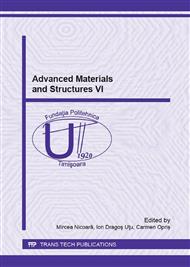p.144
p.149
p.153
p.159
p.164
p.170
p.176
p.182
p.188
Optimization of Process Parameters for the Manufacturing of High Temperature Vacuum Brazed WC-NiCrBSi Coatings
Abstract:
Process parameters play a crucial role in the final characteristics and properties of every product. The current work focuses mainly on improving the vacuum furnace brazing process for tungsten carbide reinforced Ni-based alloy (NiCrBSi) metallic composite coatings, by establishing the best set of parameters adapted to this specific chemical composition. In order to determine the optimum parameters, a fine adjustment of a typical vacuum brazing process was performed. The melting interval of the filler metal was identified by means of Differential Thermal Analysis. Morphology, microstructure and metallurgical bond of the cladding to the substrate material were investigated by Scanning Electron Microscopy and Light Microscopy combined with a Porosity Analysis Software. The process optimization resolved the initial problem of fractures and crack initiation, making possible to achieve high quality hardfacing coatings with a low degree of porosity (approximately 1 %).
Info:
Periodical:
Pages:
164-169
Citation:
Online since:
August 2016
Price:
Сopyright:
© 2016 Trans Tech Publications Ltd. All Rights Reserved
Share:
Citation:


